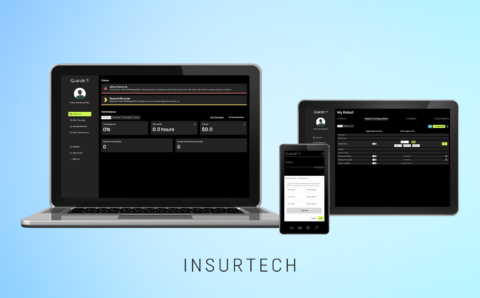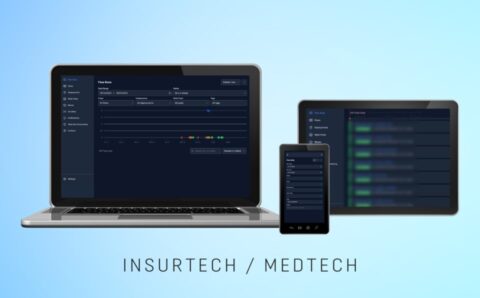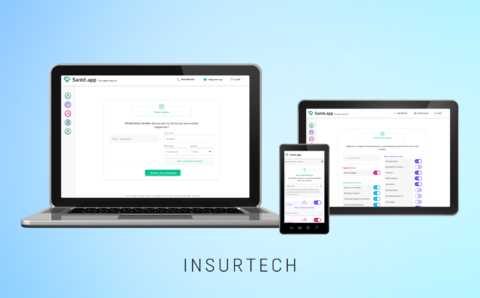
Business automation is an efficient strategy enabling boosted efficiency and responsiveness, helping companies fit in changing market conditions and customer demands. Robotic Process Automation (RPA) has become a transformative solution across numerous industries, bringing in performance optimization, new value stream creation, flexibility, and agility. It relies on software robots or bots to carry out routine business tasks and procedures, enhancing operational efficiency and lowering enterprise expenses. According to Statista, the projected expansion of the worldwide RPA market projects growth to over 13 billion U.S. dollars by 2030, marking a substantial increase of more than 12 billion from the insights registered in 2020.
This article delves into the comprehensive overview of Robotic Process Automation cost, describing the aspects that require your financial investments and why this robust tool is worth implementing, streamlining business processes. With our guide, you’ll be able to make relevant decisions concerning business automation, roughly estimating the costs required for RPA.
Table of Contents:
Implementation Costs
Estimating RPA implementation costs requires a comprehensive understanding of software-related investments. This is critical for businesses seeking to maximize RPA’s benefits while optimizing their budgetary allocations.
Costs of Software Needed for Automation
What points are incorporated into the cost of RPA implementation? Let’s outline them.
Licensing fees
When starting the Robotic Process Automation cost estimation, one of the initial considerations relates to the essential software availability. In addition, licensing fees comprise a vital element, requiring you to invest in the proprietary instruments that power their automation capacities. These expenses traditionally vary according to the complexity of the RPA software, the scale of deployment, and the features comprised in the licensing package. In a nutshell, RPA licensing fees are defined by the number of software robots or bots needed, the level of automation complexity, and the scope of functionalities required.
Maintenance and support
Maintenance and support expenses set another inalienable aspect of implementation costs. Guaranteeing the seamless performance of RPA systems requires ongoing support and maintenance services. The obligatory activities cover handling faults and failures, troubleshooting, and making sure that the system reflects the dynamic business requirements.
Upgrades and updates
Enhancements and modifications condition the variable nature of RPA implementation costs. RPA technologies don’t stop in their advances, making it integral for organizations to contribute resources and maintain up-to-date automation tools. Regular upgrades advance your RPA software’s functionality and guarantee compliance with security standards and industry regulations. This is especially significant since the adherence to domain-specific guidelines liquidates the possibility of legal issues, penalties, and trustworthiness loss.
At PLANEKS, we fully comprehend your business budget considerations. That’s why you can employ free automation solutions like Selenium and experience substantial expense savings. Selenium is an open-source tool that is employed by many vast corporations like Google and Facebook. When applying free and efficient solutions, you make a strategic decision, aligning cost-effectiveness with automation goals.
Professional Services
When assessing RPA implementation costs, include professional services as part of your automation journey. They are the foundation of your financial calculations, incorporating diverse procedures to deploy RPA solutions successfully.
Consulting Fees
Getting recommendations from qualified consultants is often the first step in an RPA implementation flow. This investment covers strategic planning, requirements assessment, and the creation of a from-scratch roadmap for the integration of robotic automation into existing business processes.
Design Creation
The following phase is the solution design creation, which comprises developing the documentation of detailed workflows. It’s an integral element forming the cost of RPA, taking into account exception handling and error recovery strategies for RPA solutions tailored to precise business demands. This comprises defining workflows and process mapping, aligning seamlessly with the organization’s objectives. Consequently, the team develops automation scripts leveraging the chosen RPA tool, focusing on adherence to best practices. This process establishes the ground for efficiently integrating RPA into the business flow, aligning technological capabilities with operational peculiarities.
Implementation Services
The RPA implementation stage directly relates to building automation scripts and deploying bots to carry out the predefined tasks. Implementation services incorporate the technical fulfillment of the automation strategy, providing that the designed solutions integrate and further interact smoothly with existing systems and processes. Thus, the compatibility with other technologies or applications is carefully considered to eliminate any possible disruptions. The flow involves in-depth configuration and testing to guarantee the reliability and accuracy of automated tasks.
Quality Assurance (QA)
The testing stage in RPA implementation guarantees the accuracy and stability of automated processes. During this phase, QA engineers complete thorough testing to identify and liquidate any potential performance failures and execution inaccuracies, making sure that the released and integrated bots carry out tasks with the highest precision possible.
Project Management
Effective project management is essential to make RPA implementation productive. Project managers are responsible for overseeing timelines, efficient resource allocation, and ensuring that the project stays on course to meet objectives within the defined budget. Moreover, they take care of clear communication, regular updates, and efficient risk management. Solid management meets dynamic aims and high flexibility and equips you for long-term sustainability, addressing maintenance, scalability, and future enhancements for continued effectiveness and ROI.
Want to Build Your Own RPA Team?
Learn the benefits of hiring skilled RPA developers and how to build a successful automation team.
Change Management
As for change management, three key elements are essentially incorporated into the cost of Robotic Process Automation:
-
- Process redesign. Businesses have to modify current processes, optimizing them for efficiency and seamless integration with automated systems, staying aligned with dynamic objectives.
- Employee training. Guiding teams by carrying out comprehensive training provides the necessary skills and professionalism required to handle and employ new automated workflows seamlessly.
- Handling counteraction to enhancements. Efficiently determining and liquidating resistance is the first thing to do for a smooth RPA adoption. Reliable communication and support strategies establish a positive attitude toward transition.
These approaches to change management ensure fruitful automation integration while also enhancing business flexibility for digitalization as a whole, facilitating a transformation-friendly environment that is stable and effective.
Maintenance and Operational Costs
Investment in supporting RPA services guarantees the durable effectiveness, solidity, and robustness of the automated processes.
Ongoing Support
Efficient and reliable ongoing maintenance will bring you different benefits of RPA. Helpdesk support assists users and stakeholders in handling issues, responding to requests, and delivering necessary guidance associated with RPA implementation. A strategy that involves profound assistance and guidance will deliver smooth RPA integration into daily operations.
It’s essential to guarantee swift troubleshooting and issue handling to maintain uninterrupted workflow automation. For this, you should allocate sufficient resources for support to overcome any challenges, minimize downtime, and optimize productivity.
In parallel, meticulous software maintenance directly impacts the longevity of RPA software. Frequent updates, patches, and enhancements should be done to elevate the security capacity and set the system to be adjustable to the ever-evolving aims of the business. This approach to ongoing support establishes a resilient framework for RPA so it remains fully aligned with organizational aims, the newest technologies, and the expected efficiency grade.
Monitoring and Optimization
Performance tracking is a standard practice for RPA support. Its principle lies in ensuring real-time insights into system functionality and efficiency. With the use of robust monitoring mechanisms, you extract a comprehensive view of your digital ecosystems, performing swift identification and rectification of potential setbacks or obstacles. Continuous refinement alterations based on assessments and feedback loops drive system elevation and elaboration aligning with the latest technologies.
Scalability is also a critical aspect to take care of, impacting the cost of RPA. It facilitates the dynamic adaptation of resources to meet varying workloads. In case you need to scale up during rising demand periods or downsize during recession times, this adaptability ensures optimal resource utilization and cost-effectiveness. Consequently, organizations are all set to easily navigate dynamic digital operations with resilience and rapidity, creating the groundwork for long-term business success.
Hidden Costs and Considerations
Aside from the cost of RPA implementation, there is a row of expenses that may be undetected at first glance. Let’s uncover what else you should keep in mind when forming a budget for robotic process automation.
Compliance and Security
Moving on, we should be aware of the costs required for regulatory compliance and solid protection.
Data security measures
Powerful data security techniques stand as a critical requirement, comprising encryption protocols, access controls, and thoroughly protected data storage. The adoption of these techniques incurs not only initial setup costs but also ongoing maintenance expenses to adapt to evolving cyber threats.
Regulatory compliance costs
Costs associated with compliance adherence are another often overlooked aspect involving investments in legal expertise, documentation, and adherence to industry-specific regulations. To avoid this, executing regular audits and assessments of integral compliance components is obligatory, allocating both financial and time investments. As a result, you get a guarantee that your RPA processes align with evolving regulatory frameworks, such as the General Data Protection Regulation (GDPR), Health Insurance Portability and Accountability Act (HIPAA), Payment Card Industry Data Security Standard (PCI DSS), according to your industry.
Unforeseen Challenges
What RPA implementation challenges you should consider prior to starting the process?
Unexpected integration issues
Despite meticulous planning, the complexities of integrating RPA with existing systems can cause unprojected challenges, demanding additional resources and time for resolution.
Process changes impacting costs
Changes throughout the development flow also impact RPA cost and are a hidden obstacle. As workflows evolve in response to RPA implementation, the associated costs may vary, necessitating careful financial reassessment.
Adapting to evolving technology
The adoption of up-to-date technologies introduces an element of unpredictability. The rapid pace of technological advancements may render specific RPA solutions obsolete sooner than forecasted, so organizations are required to invest financial resources for system updates or even transition to new ones.
Return on Investment (ROI)
Return on Investment (ROI) calculation delivers a transparent comparison between the RPA implementation costs and the gained benefits. Thus, you can efficiently determine whether the investment is financially justified and if the returns outweigh the expenses. Consequently, you have efficiency gains and cost savings brought about by RPA on hand to make a decision based on the calculations. This information allows optimizing resource allocation, guaranteeing that the expenses align with business goals and budgetary constraints.
Calculating ROI for RPA
When evaluating the ROI for RPA, several key factors are included in the overall economic assessment, and using a software development cost estimation calculator can help streamline this process by providing accurate insights into potential expenses and savings
-
- Сost savings get delivered by efficiency gains. RPA takes over repetitive procedures and reduces the workload of human labor. This efficiency converts to time savings and minimizes operational expenses, positively impacting the overall ROI.
- The high accuracy and reduction of manual errors introduced by RPA implementation elevate financial gains. By liquidating the risk of human-made failures, businesses save costs related to error rectification, potential fines, and reputational damage.
- A higher productivity of employees is a noteworthy element in ROI estimates. The huge benefit of RPA is that it enables human employees to focus on higher-value responsibilities that are more complex and require manual engagement and time.
Tips for Cost-Effective RPA Implementation
You should follow the tips that enable the reduction of RPA implementation costs. This requires a strategic approach, balancing tech considerations with organizational dynamics and retrieving the full potential of automation technologies.
-
- Prioritizing automation opportunities is essential for organizations. For this, you need to conduct an all-around analysis of flows to determine tasks with high repetition, rule-based concepts, and solid impact on business efficiency. Concentration on these areas guarantees that RPA is employed where it can bring maximum value.
- Choosing the right RPA solution implicates careful assessment of available tools and comparing their scalability, pricing, certification availability, compatibility, and integration flow. This allows you to make the most relevant choice for an RPA solution that addresses your organizational requirements.
- Collaboration between IT and business teams is worth thinking over. Primarily, it implies picking reliable communication tools so that your business team and IT vendor stay available for each other. This ensures that all RPA-related issues can be handled efficiently, and your employees can be guided when it is necessary.
- Regularly reassessing and optimizing processes will help you identify new automation fields and bring existing workflows to a new level, boosting their efficiency. This iterative strategy enhances the system’s power and allows for RPA cost adjustment based on changing requirements.
Case Studies
It’s time to take a look at the real market examples, proving that the cost of RPA implementation can bring you huge benefits on a long-term basis.
Walmart, a huge retail market player, has adopted automation by deploying hundreds of bots to streamline various operations. These bots play a pivotal role in handling tasks such as responding to employee queries, extracting information from audit papers, overseeing inventory flow, and identifying slow-moving or obsolete stock. Due to Walmart’s immense scale, even modest transformations can lead to substantial savings. Relying on RPA, Walmart efficiently manages millions of accounts receivable and employee payrolls within its extensive back-office operations. This strategic integration of RPA not only enhances operational effectiveness but also contributes to improved customer experiences and employee satisfaction, showcasing the significant impact of RPA in the retail giant’s business processes.
Coca-Cola, recognized as the world’s largest beverage company and one of the most esteemed global brands, holds a 130-year legacy, operating in over 200 countries, and offering more than 500 brands. With a customer base exceeding 200 million and a consumption of 1.9 billion products daily, Coca-Cola’s influence is both vast and profound. Operating within the approach of ongoing improvement, Coca-Cola has set three core objectives that it consistently strives to obtain:
-
- Seamlessly executing HR processes and strategies as an integral extension of the client organization
- Focus on delivering timely and accurate payroll and HR operational processes, emphasizing constant improvement and adherence to best practices
- Handling employee inquiries with a high-quality experience
To realize these objectives, Coca-Cola has adopted automation by initially leveraging Blue Prism’s Robotic Process Automation (RPA) platform to automate processes within its finance division. As this proved successful, the company expanded its exploration of automation opportunities across various divisions, with a particular emphasis on human resource management. This use of RPA aligns with Coca-Cola’s commitment to enhancing operational efficiency and ensuring a seamless, high-quality experience for both clients and employees.

Robot Factory
Robot Factory software streamlines insurance tasks with automation, saving up to 120 hours a month and improving overall workflow efficiency.

AI Platform
The AI-Assisted platform we developed improves admin hours and resource management, elevating productivity and service quality in healthcare.

Santé.app
Santé.app simplifies health insurance decisions by automating surveys & comparisons, helping users find the insurance offers for their needs.
Conclusion
Carefully assessing the RPA implementation costs is critical for organizations seeking to achieve the new efficiency level. RPA software offers significant productivity, optimization, and accuracy benefits, which has made many businesses implement the RPA for efficiency gains, not being mindful of costs. We highly suggest you follow their example since RPA equips you with all the necessary tools to achieve top performance capacity and become the next market winner in your niche.

